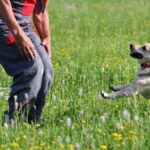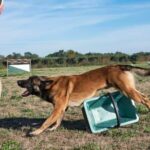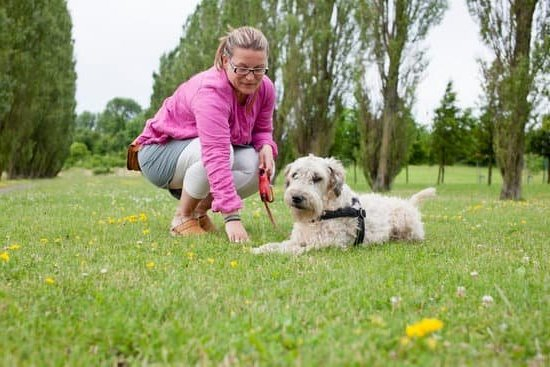Police sniffer dogs play a crucial role in law enforcement, assisting in detecting illegal substances, explosives, and missing persons. The training of these remarkable canines has a long history in police work, evolving to meet the demands of modern law enforcement. In this article, we will explore the detailed process of how police sniffer dogs are trained to perform their essential duties, from basic commands to real-world scenario training.
The use of police sniffer dogs dates back to ancient times when dogs were used for hunting and protection. Over time, their abilities to detect scents have been harnessed for law enforcement purposes. Today, these specially trained dogs work alongside their handlers to ensure safety and security in various situations.
The training process encompasses a range of techniques, including basic obedience training, scent detection training, agility training, real-world scenario training, and bonding with their handlers. Each aspect is crucial in preparing these intelligent animals for their vital role in supporting law enforcement efforts. In the following sections, we will delve into each stage of their training to provide a comprehensive understanding of how police sniffer dogs are prepared for duty.
Basic Training Techniques
In order to train police sniffer dogs, there are several basic training techniques that are utilized to ensure that these working dogs are able to perform their important role in law enforcement effectively. Here are some of the fundamental methods used in the training of police sniffer dogs:
- Basic Commands and Signals: The training of police sniffer dogs begins with the teaching of basic commands and signals. These commands include “sit,” “stay,” “heel,” “come,” and others. The dogs also learn important signals from their handlers, such as hand gestures or whistle commands.
- Positive Reinforcement Methods: Training police sniffer dogs involves the use of positive reinforcement techniques. This means that when a dog successfully follows a command or detects a scent, they are rewarded with treats, toys, or verbal praise. This positive reinforcement helps to motivate the dog and strengthen their behavior.
- Socialization: In addition to basic commands and rewards, police sniffer dogs undergo socialization training to ensure that they can work effectively in various environments and around different people. This includes exposure to different sounds, sights, and situations.
These fundamental training techniques form the basis for the more specialized training that police sniffer dogs receive as they progress in their careers.
Overall, understanding how police sniffer dogs are trained provides insight into the rigorous process that these animals go through in order to become reliable members of law enforcement teams. Their specialized skills are developed through carefully planned training programs that focus on obedience, scent detection, agility, real-world scenarios, handler bonding, and continuing education.
Scent Detection Training
Training Process
The training process for police sniffer dogs in scent detection is a crucial aspect of their development and effectiveness in law enforcement work. The initial step involves introducing the dog to a specific scent, using methods such as hiding it in a controlled environment for the dog to locate. As the training progresses, the difficulty level increases, with the dog being required to identify scents in various settings and quantities.
Types of Scents
Police sniffer dogs are trained to detect a wide range of substances, including drugs, explosives, and even human remains. Each type of scent requires specialized training techniques to ensure that the dog can accurately identify and alert its handler to the presence of these substances. By using positive reinforcement and rewards, trainers can help the dogs develop an acute sense of smell and an ability to differentiate between different scents.
How Police Sniffer Dogs Are Trained
Throughout this process, trainers use positive reinforcement methods such as praise, treats, or toys to encourage the desired behavior from the dogs. By consistently rewarding them for correctly identifying scents, the dogs learn to associate specific odors with a positive outcome. This creates a strong foundation for effective scent detection work in real-life law enforcement scenarios.
Obedience Training
Obedience is a crucial aspect of police sniffer dog training, as it ensures that the dogs can follow commands and work effectively in various law enforcement situations. One of the key techniques used in obedience training is the use of positive reinforcement. This involves rewarding the dogs with treats, praise, or play when they correctly follow a command. This method helps to create a strong bond between the dog and its handler while also encouraging the desired behavior.
Another important aspect of obedience training for police sniffer dogs is consistency. Handlers need to consistently enforce commands and expectations to ensure that the dogs understand what is expected of them. This includes using clear verbal cues and hand signals to communicate with the dogs effectively.
Furthermore, police sniffer dogs undergo rigorous and specialized obedience training to ensure that they can maintain focus and discipline even in challenging environments. Whether it’s searching for drugs in a chaotic environment or staying calm during crowd control situations, obedience training plays a vital role in preparing these K9s for their demanding roles in law enforcement.
| Obedience Training Techniques | Importance |
|---|---|
| Positive reinforcement | Creates bond between dog and handler |
| Consistency | Clear communication and expectations |
| Rigorous specialized training | Prepares dogs for demanding law enforcement roles |
Agility Training
Agility is a crucial aspect of police sniffer dog work, as they often need to navigate various terrains and obstacles to carry out their duties effectively. To ensure that these dogs are physically fit and agile, specific training techniques are employed. One common method used in agility training is the use of obstacle courses, which include hurdles, tunnels, balance beams, and weave poles. These courses help improve the dog’s coordination and speed while navigating different obstacles.
In addition to obstacle courses, regular exercise routines such as running, jumping, climbing, and swimming are incorporated into the training regimen to enhance the dog’s overall physical fitness. These exercises not only improve the dog’s agility but also contribute to their endurance and stamina during prolonged search activities or pursuit of suspects.
It’s important for police sniffer dogs to be agile not only for their own safety but also for the safety of their handlers and the public. When they are agile and physically fit, they can effectively respond to commands and perform their duties efficiently in various law enforcement situations. The intensive agility training ensures that these highly skilled animals are ready to face any challenges that come with their indispensable role in police work.
| Agility Training Techniques | Description |
|---|---|
| Obstacle Courses | Incorporate hurdles, tunnels, balance beams, and weave poles |
| Exercise Routines | Include running, jumping, climbing, and swimming |
| Importance of Agility | Vital for safety of dogs and effectiveness in responding to commands |
Real-World Scenario Training
Police sniffer dogs play a crucial role in law enforcement, often being called upon to detect drugs, explosives, and other substances that pose a threat to public safety. To ensure that these dogs are able to perform their duties effectively, they undergo rigorous real-world scenario training. This type of training is essential for preparing the dogs to work in various environments and situations, ultimately helping law enforcement agencies carry out successful operations.
During real-world scenario training, police sniffer dogs are exposed to different settings such as airports, border crossings, and other high-security areas where their skills will be put to the test. Handlers simulate scenarios such as vehicle searches, building searches, and crowd control situations to prepare the dogs for the challenges they may encounter on the job. This type of training helps the dogs become familiar with different odors and distractions they may encounter while on duty.
In addition to honing their detection skills in these scenarios, police sniffer dogs also learn how to communicate effectively with their handlers during real-life situations. The bond between the dog and its handler is crucial in carrying out successful operations, and real-world scenario training helps strengthen this partnership. Through ongoing practice and exposure to diverse environments, police sniffer dogs are able to perform at their best when it matters most.
- Simulated scenarios
- Exposure to different environments
- Communication with handlers
Bonding With Handlers
Sniffer dogs are a valuable asset to law enforcement, using their keen sense of smell to detect drugs, explosives, and other contraband. However, a crucial aspect of their effectiveness lies in the strong bond between the dog and its handler. This section will delve into how police sniffer dogs are trained to form and maintain this important bond.
The relationship between a sniffer dog and its handler is built on trust, communication, and mutual respect. One of the key training methods used to establish this bond is through positive reinforcement. Handlers use praise, treats, and affection to reward the dog’s desired behavior, creating a positive association with following commands and working alongside their handler. This not only strengthens the bond between them but also fosters a desire in the dog to please their handler.
Another aspect of bonding with handlers involves regular and consistent interaction. Handlers spend significant time with their canine partners outside of training exercises, whether it’s during playtime or simply spending downtime together. This constant interaction helps solidify the bond by creating a strong emotional connection between the dog and its handler. Additionally, handlers often act as caregivers for their sniffer dogs, ensuring their well-being by providing proper care, exercise, and grooming.
Overall, the relationship between police sniffer dogs and their handlers is vital to successful operations in law enforcement. These dedicated partnerships rely on trust, effective communication, and continuous reinforcement of their special bond through ongoing training and consistent interaction. The results are highly trained teams capable of effectively detecting illicit substances and aiding in maintaining public safety.
By prioritizing the bonding process as part of police sniffer dog training programs, law enforcement agencies ensure that these valuable canines work seamlessly with their handlers to carry out critical operations successfully.
Continuing Education and Certification
Ongoing Training
Once police sniffer dogs have completed their initial training, the learning does not stop there. Ongoing training is crucial to ensure that the dogs maintain their scent detection skills and obedience levels. Regular practice sessions and mock scenarios are conducted to keep the dogs sharp and ready for any situation they may encounter in the field.
Certification Process
In order to ensure the highest level of quality and reliability, police sniffer dogs undergo a certification process. This process typically involves a series of tests and evaluations to assess the dog’s ability to detect scents accurately and respond promptly to commands. Handlers also undergo certification to ensure that they are capable of effectively working with their canine partners.
Regulations and Standards
Police sniffer dog programs must adhere to specific regulations and standards set forth by law enforcement agencies. These guidelines dictate the minimum requirements for training, handling, and ongoing education for both the dogs and their handlers. By meeting these regulations, agencies can have confidence in the effectiveness of their sniffer dog teams.
Continuing education and certification play a crucial role in maintaining the effectiveness of police sniffer dog teams in law enforcement. Through ongoing training and adherence to strict standards, these canine units continue to be valuable assets in detecting illegal substances, locating missing persons, and enhancing overall public safety.
Conclusion
In conclusion, the training of police sniffer dogs plays a vital role in law enforcement, allowing these highly skilled animals to assist in detecting illegal substances, locating missing persons, and maintaining public safety. The dedication and hard work put into training these dogs are evident in their ability to perform complex tasks and react quickly in real-life scenarios.
A strong bond between the dog and its handler is essential for successful operations, and the ongoing education and certification process ensures that both the dogs and their handlers are well-prepared for the challenges they may face.
The process of how police sniffer dogs are trained involves various techniques, including basic obedience training, agility training, scent detection training, and real-world scenario training. Positive reinforcement methods are used to encourage desired behaviors, while specific scents and substances are introduced to the dogs during their scent detection training. Through rigorous exercises and simulations, the dogs become proficient in searching vehicles, buildings, and other environments.
It is important to recognize the incredible capabilities of police sniffer dogs and appreciate the collaborative effort between these intelligent animals and their dedicated handlers. The success of their work underscores the significance of investing time and resources into their specialized training. Ultimately, police sniffer dog training significantly contributes to supporting law enforcement efforts worldwide.
Frequently Asked Questions
How Are Police Dogs Trained to Sniff Out Drugs?
Police dogs are trained to sniff out drugs through a process called imprinting. Handlers use drug-scented materials during play and reward the dog when it finds the scent. This creates an association between the scent and a positive outcome.
How Are Police K9s Trained?
Police K9s undergo extensive training that includes obedience, agility, detection work, and advanced skills such as suspect apprehension and handler protection. Training also focuses on socialization, environmental exposure, and desensitization to loud noises.
How Do Police Dogs Know Who to Track?
Police dogs are trained to track individuals based on their unique scent. When a track is initiated, the dog picks up on the human scent left behind and follows the trail using its powerful sense of smell. This allows them to distinguish between different scents and follow specific tracks when given a command by their handler.

Welcome to the blog! I am a professional dog trainer and have been working with dogs for many years. In this blog, I will be discussing various topics related to dog training, including tips, tricks, and advice. I hope you find this information helpful and informative. Thanks for reading!





